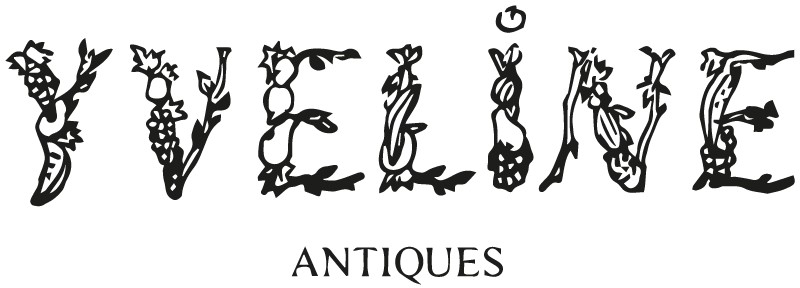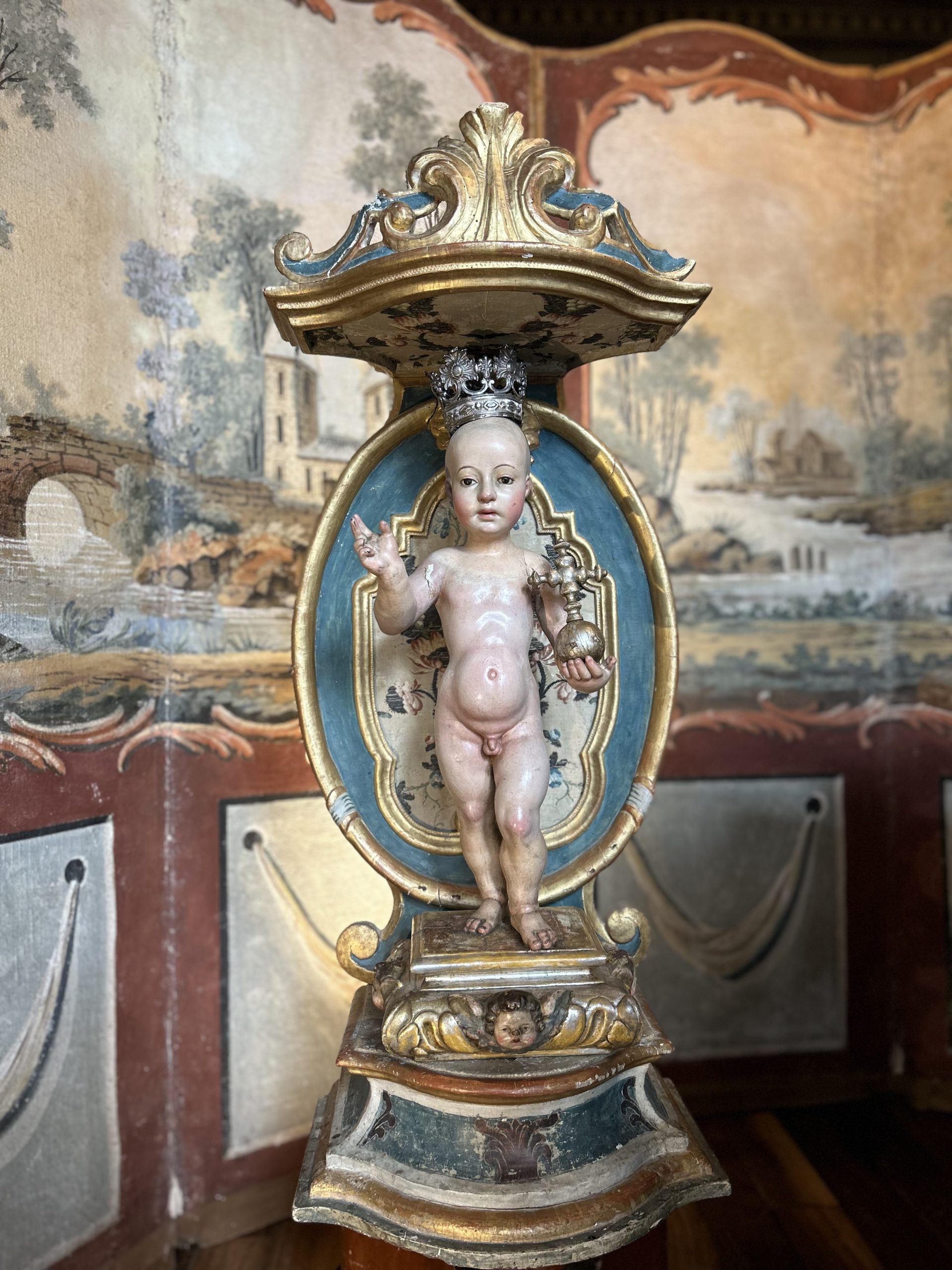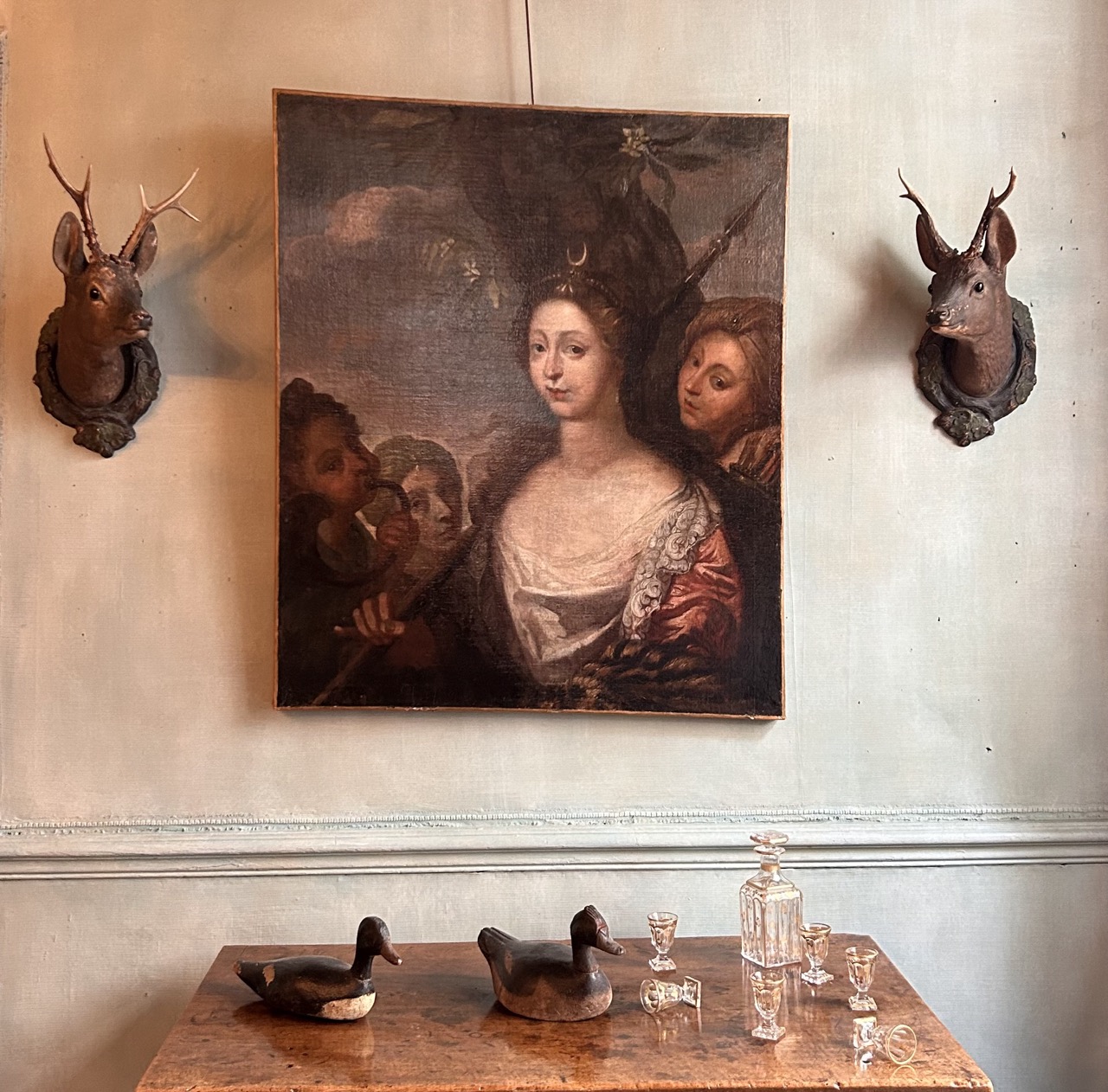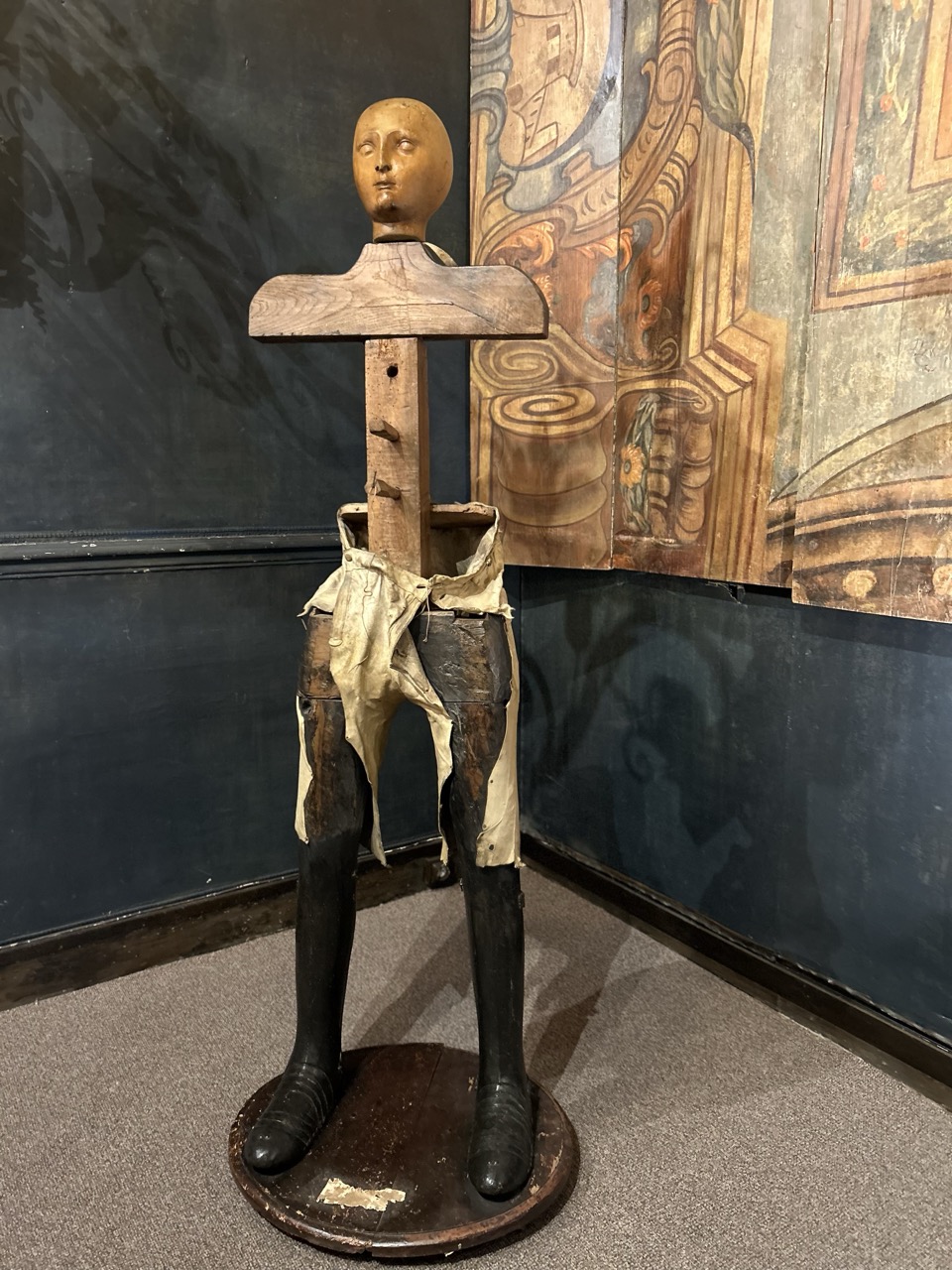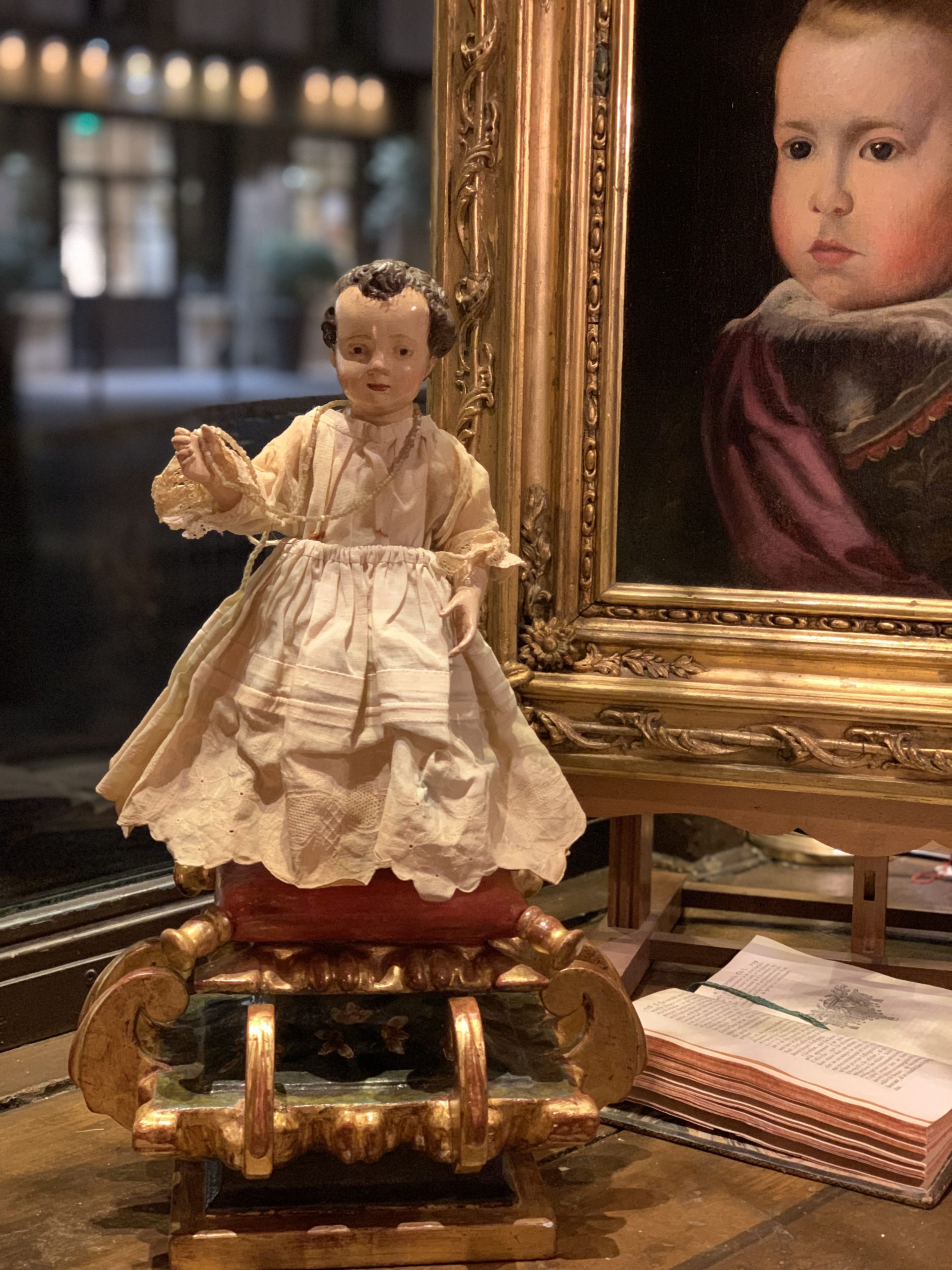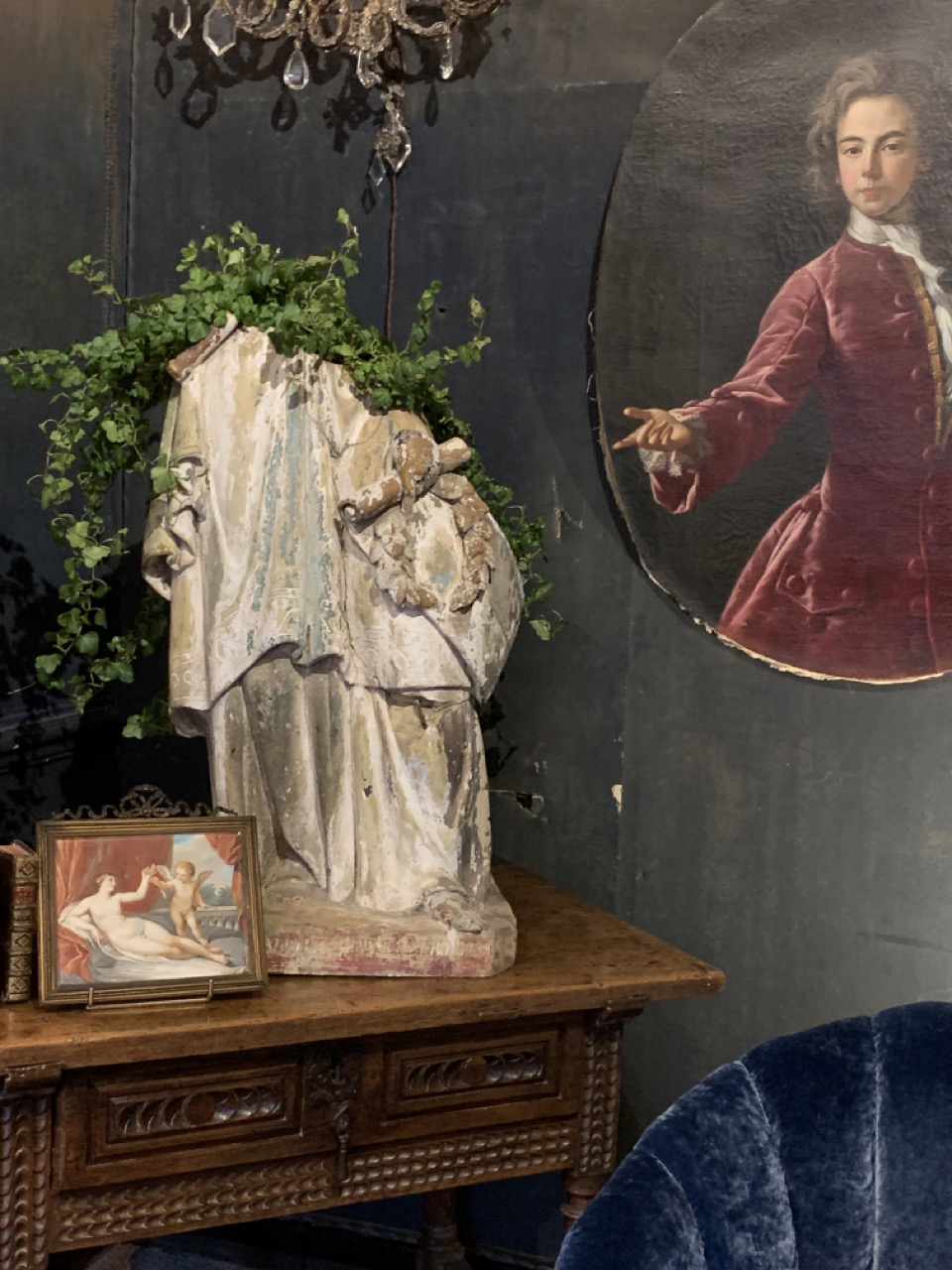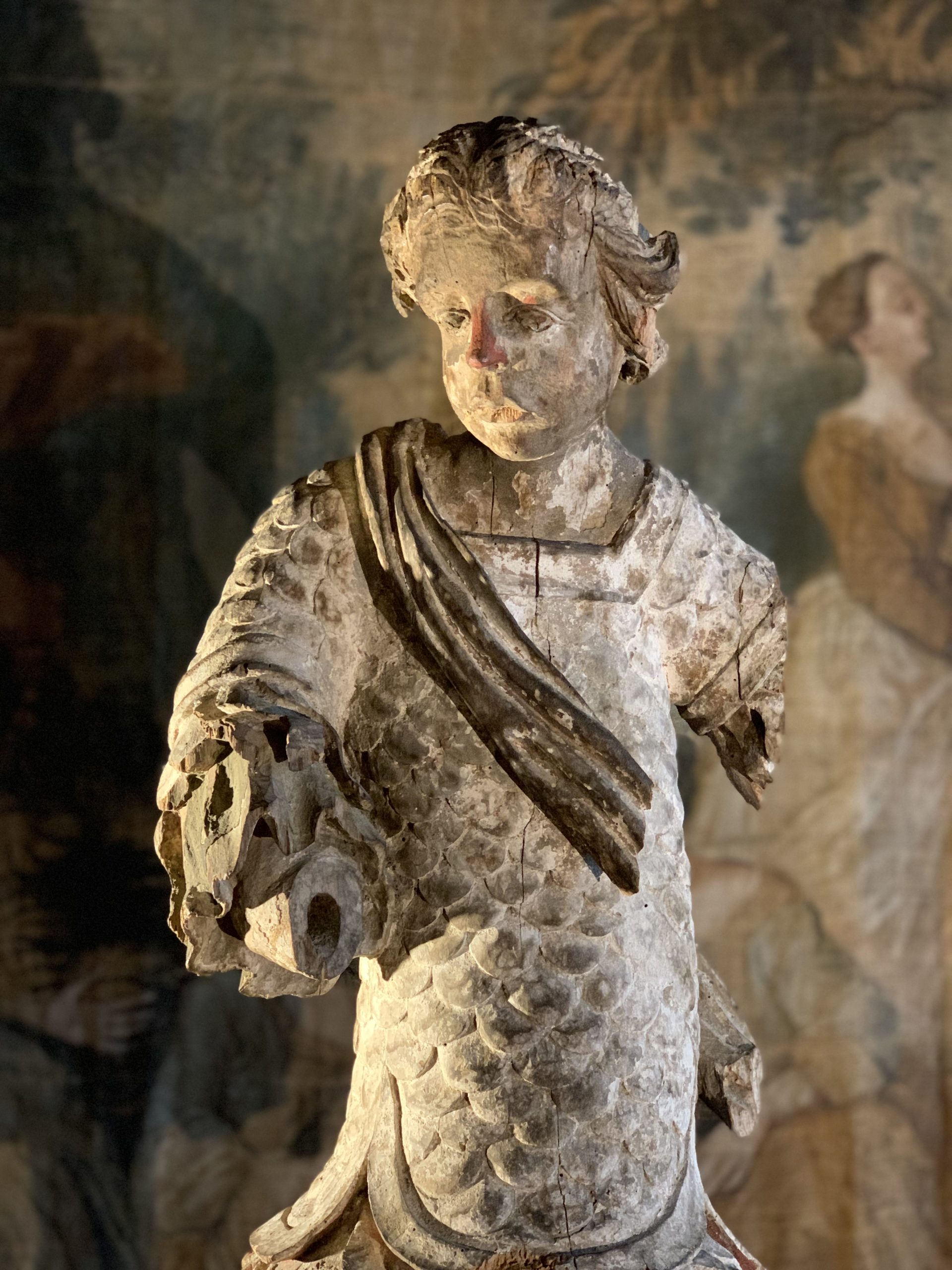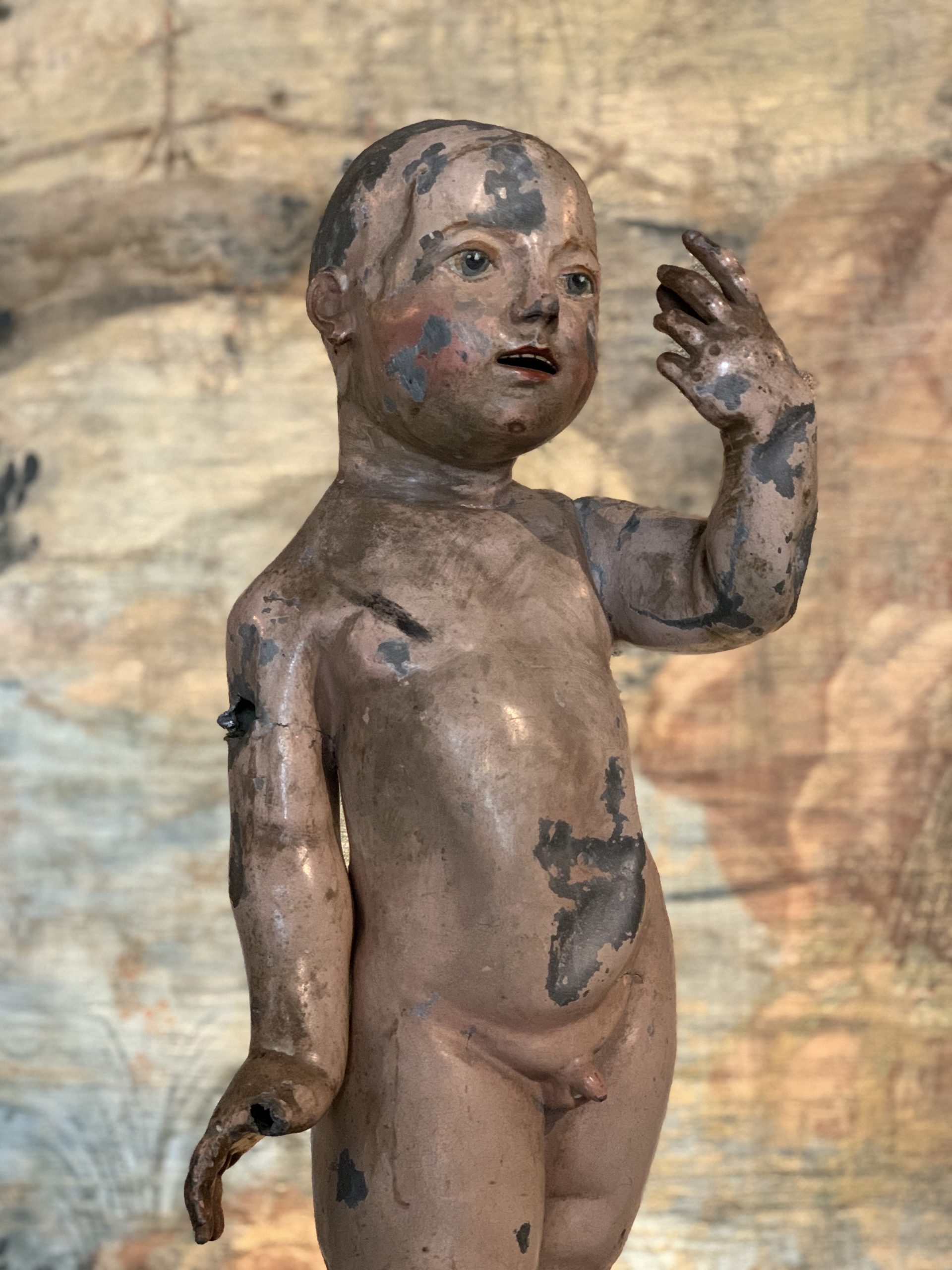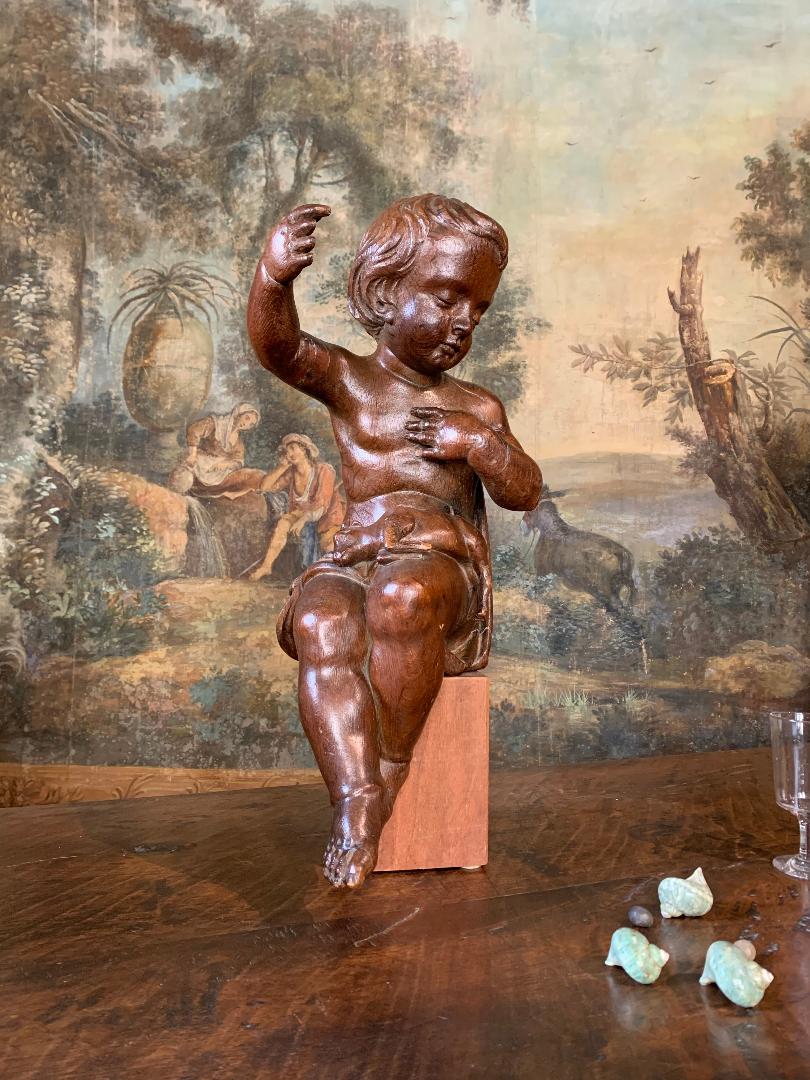Large painted wooden cutout depicting a Vestal Virgin carrying a yoke and a sacred fire.
18th century
Italy or Southern of France
“Allegory of fidelity in love”, terracotta sculpture representing Cupid playing with a dog.
Italy
18th century
Polychrome wooden sculpture representing the “Blessing Child Jesus” holding a globe surmounted by a gilded wooden cross, the right arm blessing, canopy in polychrome carved wood 19th century.
Italy
18th century
Pair of sconces in the shape of deer heads in terracotta painted natural, glass eyes.
Germany,
19th century
Wooden armor holder, used to present both all pieces of armor: helmet, gambison, chain mail.
19th century
“Triumphant Child Jesus” round polychrome lead sculpture, polychrome carved wooden base.
17th century,
Andalusia, Spain
Fragment of a terracotta sculpture depicting Caliope. The figure is shown standing. Visible attributes of Caliope on the base the inscription Caliope Poesia Erotica
The archangel is depicted in a dynamic pose which may indicate that the angel was in action. Originally holding a sword, his attribute. He wears a curly “crown” hairdo framing a youthful face, his head bowed in a serene expression.
Work of the first half of the XVIIIth probably from the South of France.
The lead casts of the “Jesus Child” are very rare objects, they are normally found in wood.
17th century
Spain
Oak wood sculpture of the child Saint Luke holding a calf on his knees.
Circa 1800,
Flanders?
